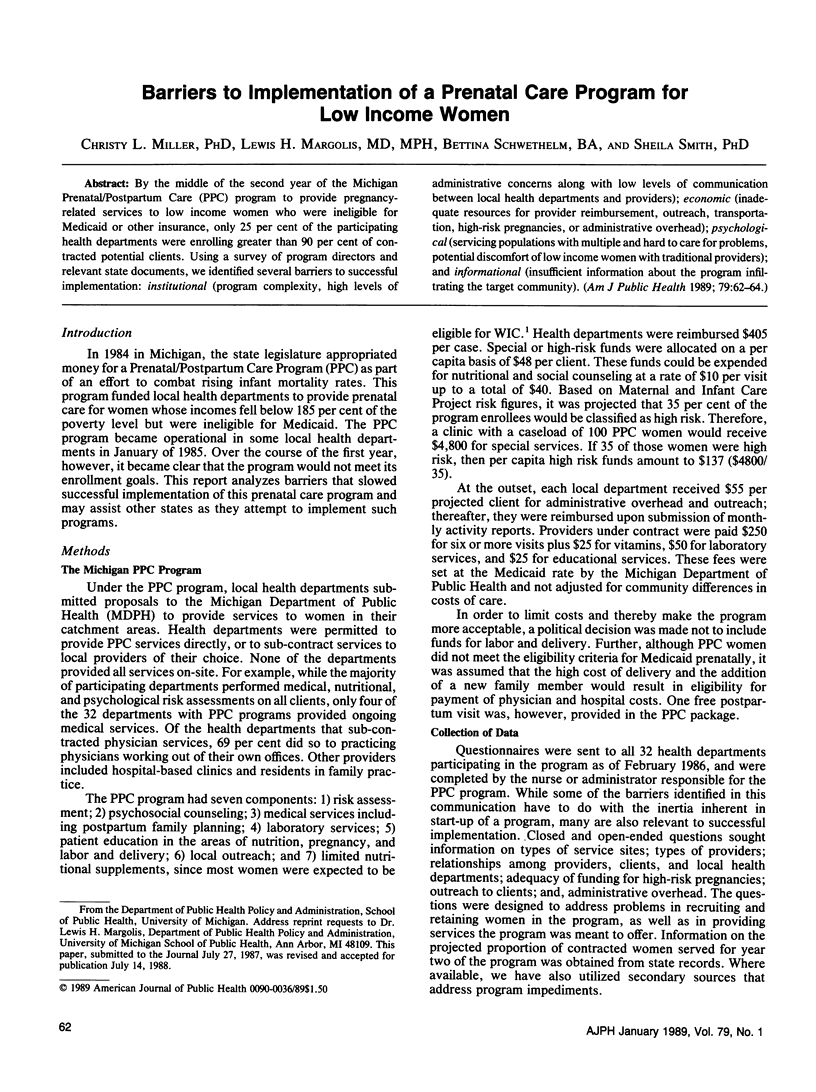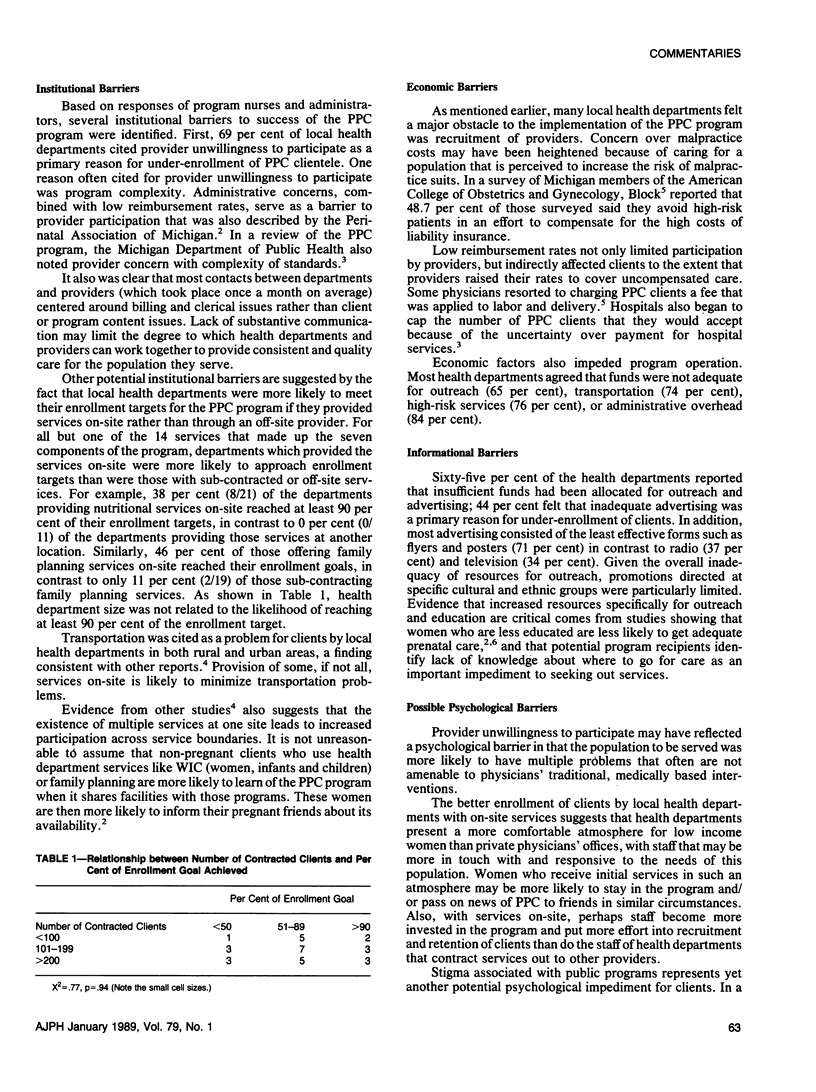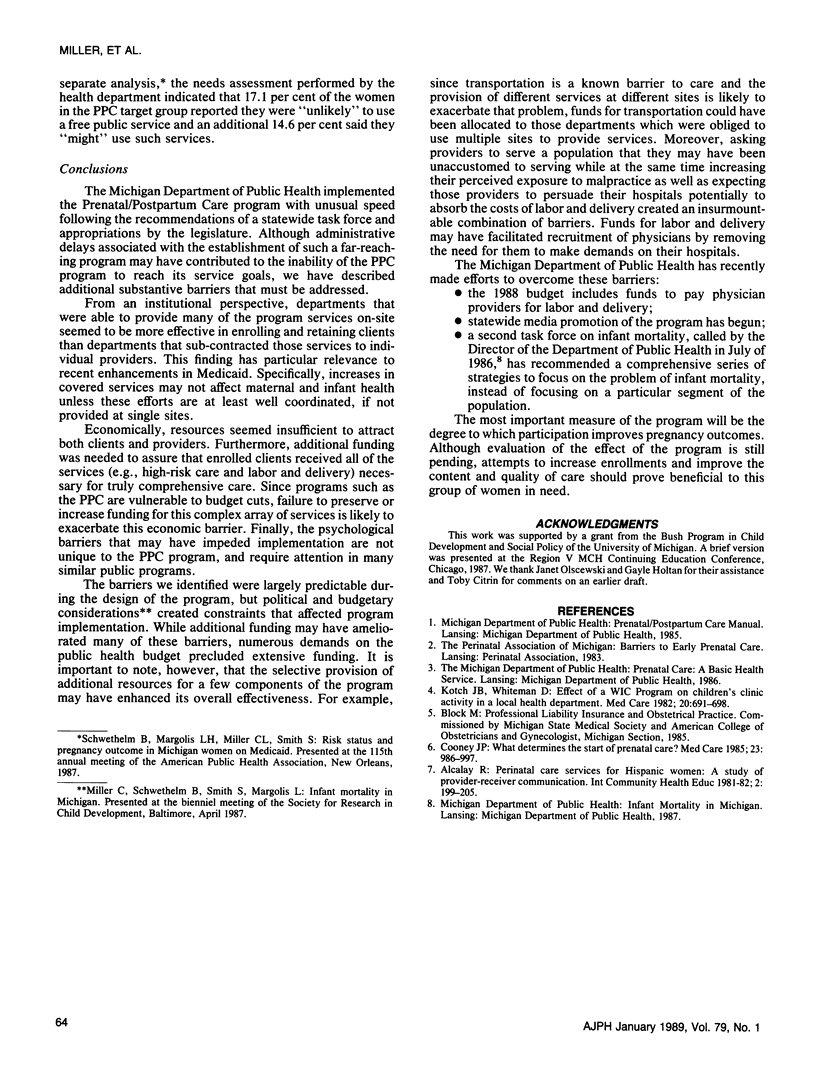Abstract
By the middle of the second year of the Michigan Prenatal/Postpartum Care (PPC) program to provide pregnancy-related services to low income women who were ineligible for Medicaid or other insurance, only 25 per cent of the participating health departments were enrolling greater than 90 per cent of contracted potential clients. Using a survey of program directors and relevant state documents, we identified several barriers to successful implementation: institutional (program complexity, high levels of administrative concerns along with low levels of communication between local health departments and providers); economic (inadequate resources for provider reimbursement, outreach, transportation, high-risk pregnancies, or administrative overhead); psychological (servicing populations with multiple and hard to care for problems, potential discomfort of low income women with traditional providers); and informational (insufficient information about the program infiltrating the target community).
Full text
PDF


Selected References
These references are in PubMed. This may not be the complete list of references from this article.
- Cooney J. P. What determines the start of prenatal care? Prenatal care, insurance, and education. Med Care. 1985 Aug;23(8):986–997. doi: 10.1097/00005650-198508000-00006. [DOI] [PubMed] [Google Scholar]
- Kotch J. B., Whiteman D. Effect of a WIC program on children's clinic activity in a local health department. Med Care. 1982 Jul;20(7):691–698. doi: 10.1097/00005650-198207000-00004. [DOI] [PubMed] [Google Scholar]


